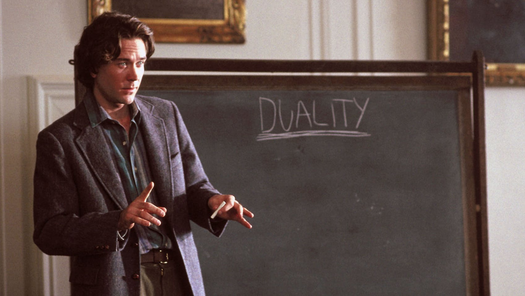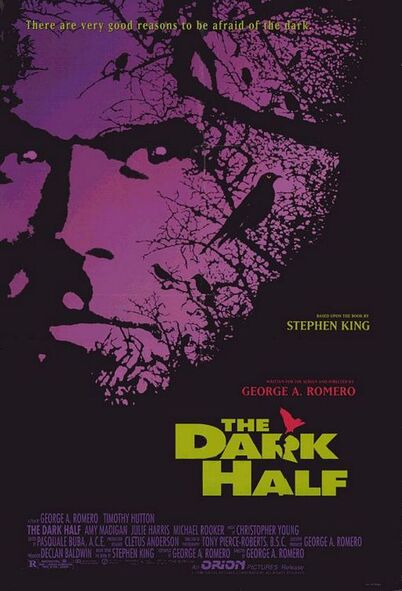Written by John Edward Betancourt ‘What’s going on?’  If there is one particular notion that has fascinated mankind for the entirety of its existence, it would have to be; the nature of evil. Because we are beings that are capable of great beauty, since we are able to offer kindness to one another, and show limitless love to those who capture our hearts. And we are also able to accomplish wonders when we unify, as evidenced by the fact that we’ve been to the stars and have been able to work together to create technological and medical wonders, all in the name of seeing our species thrive and survive. Which is why it seemingly doesn’t make any sense, that we are also capable of great evil. The kind that engenders great cruelty and hate toward our fellow man, to the point where we’ve done terrible things in its name. But while it is important to recognize those horrible moments, so they never come again, they have no place in this particular discussion. Instead, what we need to focus upon, are the motivating factors of evil, simply because we have struggled to uncover that particular answer. But that hasn’t stopped some from speculating on the possible origin of our evil acts. For there are some, who firmly believe that decades of trauma and abuse and everything negative in between will motivate a person to turn to evil and there is merit to that line of thinking. After all, we've come to learn that countless serial killers are products of their environment, and oddly enough ‘the cycle of abuse’ seems to be a pretty reasonable way to peg the nature of evil and how it continues to persist. But even then, that doesn’t necessarily answer all of our questions. Because the cycle has to start somewhere, so what was it that truly motivated humanity to begin to enact cruel acts upon one another? Sadly, the answer may be related to something that none of us really want to think about. In that, evil is something that could simply be in our nature. That the primitive jelly that we inherited from our ancestors, wherein they had to rely upon darker elements within their psyche to survive, has been with us every step of the way and we’ve learned to indulge it and unleash it when we deem it necessary. Which means that some learn to harness this and hang on it and use it more often, leading to the acts we see and really, what all of this boils down to, is whether or not the darkness that resides within our souls is something that can be genuinely controlled. A notion that has been explored heavily in fiction throughout the years by many of the greats, including George A. Romero. Since his next project, The Dark Half, dove deep into this particular concept in a fascinating manner. Which is actually a terrifying prospect when one takes a moment to think about it, since Romero understands the human condition pretty well and putting its darkest aspects on display in a motion picture should result in one of the most frightening movies ever made. But leave it to George to actually show some measure of restraint with this particular adaptation of Stephen King’s novel of the same name. By choosing instead to offer up some unique perspectives on our darker side and what it means to us. But before we dive into those particular parts of the story, let’s take a moment and celebrate the fact that while George went a little more low-key with the story, he certainly didn’t hold back in regard to the physical personification of evil in this movie. Because George Stark is the perfect realization of our evil core since he has no fucks to give about anything in life and relishes in harming others at every turn and there’s something quite striking about having him appear on screen in a classic Hollywood fashion.  For he is always clothed in the darkest of clothes, and his facial structure has that wonderful Mr. Hyde feel and the rest of what makes this villain work, comes courtesy of actor Timothy Hutton. Who simply did a phenomenal job of playing both Thad Beaumont and George Stark and he does such an incredible job acting wise, that you almost cannot tell that Hutton is doing double duty in this particular tale. Because he simply loses himself in both roles, and the differences between Beaumont and Stark are striking, and honestly, it’s quite the powerful experience to see him switch back and forth between the two characters. But while it is cool to see Hutton chew it up as two alter egos and see the core of evil on physical display in this story, what Romero has to say about the darkness we carry within us, is what makes this particular tale so worth our while. Because often times, stories in this vein not only acknowledge the fact that this evil is something that we carry with us every step of the way, they also point out that we need it to function. Which has merit, since sometimes we need our anger and our survival instincts to get by in life. But here, George wastes no time in pointing out that maybe, we need to think about leaving this part of our humanity behind, that perhaps evil has outlived its 'usefulness' and has no place in modern society. Which is a bold thing to say in film, because most stories that explore the duality of man, want to assuage us that we can keep this kind of monster in check by being the better person. But instead, Romero says to hell with that notion and makes it clear that perhaps the time has come for mankind to stop worrying about the root cause of something this ancient, and whether or not we can control it, and instead figure out how to purge this mess at any cost. Because to do so, would mean happier days. Days without lies, and days without mood swings that leave us in a dark and angry place, the kind where we are eager to lash out at the first person to push our buttons and who knows… perhaps it would lead to days where mankind no longer indulges in war and cold-blooded murder, allowing for us embrace a sense of peace. Which oddly makes this a slightly uplifting story. Because until George Stark pops up, Thad actually does find peace by choosing to leave George behind. For he is able to connect with his wife and with his young children, and he even seems to be lighter on his feet without the evil, and that is definitely a plot twist that stays with you long after this story has come to an end. Because it really does leave you wondering if the cure to the modern world’s ailments, lies in burying the part of us that is ‘not very nice’. Yet while those concepts alone make this movie quite compelling and powerful, make no mistake about it, this is a horror/thriller through and through. Because George Stark is relentless in his quest for blood, and he does some genuinely horrible things throughout the course of this picture. Plus, the more philosophical notions in this movie are also given their own horror elements so George’s arrival in the story has depth and meaning and purpose and really in the end, this is simply a brilliant motion picture. One that could be classified as a thinkin’ man’s horror film since you so rarely see this many psychological and philosophical concepts present within scary stories. But George Romero was never one to shy away from a storytelling challenge and that’s evident here and what’s truly impressive about this story, is that King’s novel and the adaptation of this script, seemingly got George’s creative juices flowing. For his next project examined another angle of the fury that we carry, in a far more realistic and terrifying manner.
0 Comments
Leave a Reply. |
Archives
April 2025
|
|
© 2012-2025, Nerds That Geek LLC.
All Rights Reserved. |
uWeb Hosting by FatCow

 RSS Feed
RSS Feed
